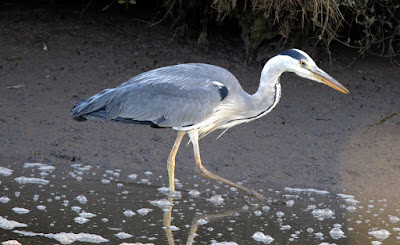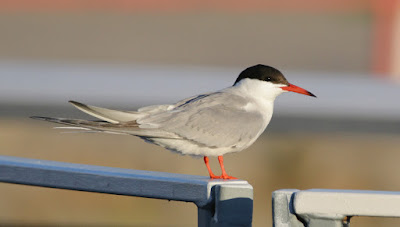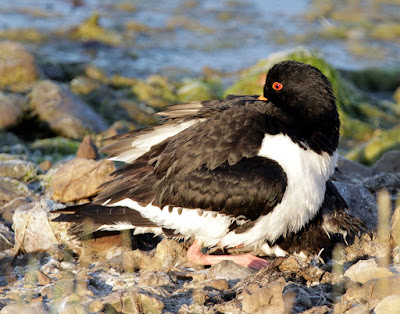The Common Terns at Conder Green are very unhelpful to anyone with a camera. Since they arrived in May they have kept their distance from the nearest viewing point. They are so fast, erratic and unpredictable in their flight patterns that it’s only possible to get a decent in-flight picture with a very fast and expensive lens. With its long tail streamers, general shape and zig-zag flight there’s a good reason that the species was once known colloquially as the “sea swallow”. It’s a term that has fallen out of fashion and one I never hear nowadays.
Fortunately the pair that bred at nearby Glasson this year have been a little more obliging by resting occasionally, especially so this morning. There’s a question; did you ever see an adult tern sit on the water? I’m not sure I have.
Common Tern
Common Tern
During the 1970s, 1980s and early 1990s Common Terns bred on the north side marshes of the River Lune. Here and from either side of the river channel they became a daily spectacle fishing the tidal flows. The Common Tern was another one of those birds that we birders took for granted; no one imagined that such a numerous and easily seen species could vanish. Years of disturbance from weekend sailors, jet skis, wind surfers, walkers with & without dogs, plus miscellaneous nuisance and even deliberate destruction took its toll until the birds finally abandoned the River Lune.
Fortunately, and after almost twenty years a pair arrived at Conder Pool in 2014 and bred successfully on an island situated relatively safe in the centre of the pool/small lake. Since then a pair have bred each year with every sign that the population might increase. Not that it will ever reach the dizzy heights of c250 pairs of Common Terns when the marsh colony peaked.
Common Tern
Apart from the chance to photograph and be alone with a Common Tern, the other highlight of my morning was the sight of 50+ Swifts over Conder Pool. That’s a fairly good count that must include some birds of the year. Meanwhile there were just 20 or so House Martins around the creeks, plus a handful each of Swallows and Sand Martins.
There was a single Kingfisher today. In addition - 190 Redshank, 20 Oystercatcher, 15 Lapwing, 4 Curlews, 3 Greenshank, 3 Common Sandpiper, 1 Black-tailed Godwit and 6 Little Grebe.
It was almost 10am before I got to Jeremy Lane where I was in time to see a Barn Owl hunting across the fields. After sitting briefly along the fence it disappeared into the distance. I was to see another one later a good 3 miles away. It too did the same vanishing act.
Swallows seem to have done well so far this year with my best count of 60+ in and around the fields up towards and including Cockersands.
Swallow
At Cockersands itself I spotted a Kestrel chased by Swallows plus singing Whitethroat and Reed Bunting; plenty of sparrows by way of a flock of about 40 House Sparrows & 12 Tree Sparrows and the usual collection of Collared Doves around the farm buildings.
Tree Sparrow
House Sparrow
Collared Dove
In the direction of Lighthouse Cottage were 20 or more Swallows, 5 Sedge Warbler, 5 Goldfinch 2 Reed Bunting and 2 Linnet.
Linking this post to Eileen's Blog.
Linking this post to Eileen's Blog.

















































.jpeg)







.jpg)












